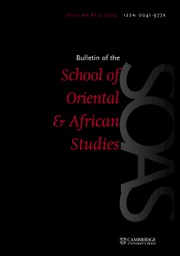No CrossRef data available.
Article contents
Some remarks on Oyrot morphology
Published online by Cambridge University Press: 24 December 2009
Extract
In view of the scarcity of publications on the Turkic languages of the Soviet Union, especially the Turkic languages of Siberia, every contribution to this subject is highly welcome. One of these is C. G. Simpson's Some features of the morphology of the Oirot (Gorno-Altai) language (issued by the Central Asian Research Centre in association with St. Antony's College (Oxford) Soviet Affairs Study Group), 1955, which, in 68 pp. of typescript, tries to give the essentials of Oyrot morphology, being based, as the author says, mainly on Dyrenkova's Oyrot grammar (Γpaмматика ОЙротского ЯзьІ,ка Moscow, 1940, 302 pp.) and Baskakov's grammatical sketch of the Oyrot language in the little Oyrot dictionary, published by himself and T. M. Toščakova.
- Type
- Articles
- Information
- Copyright
- Copyright © School of Oriental and African Studies, University of London 1958
References
page 492 note 1 I have read S. Je. Malov's article on archaic and recent Turkic languages, published a few years ago in the Izv. ANSSSR, and disagree on all major points.
page 509 note 1 In view of the occurrence of this form as early as in Čaγatay, with Rabγūzī (1310), and as far east as in Siberian Turkic, I do not think that I can maintain my earlier supposition of a possible western (Oγuzic) origin of this form in Čaγatay, as stated there.
page 520 note 1 In German, the inchoative action would also be circumscribed by a desiderative phraseological verb, e.g.: ‘der Genosse wollte mir (doch) Bücher schicken’.


